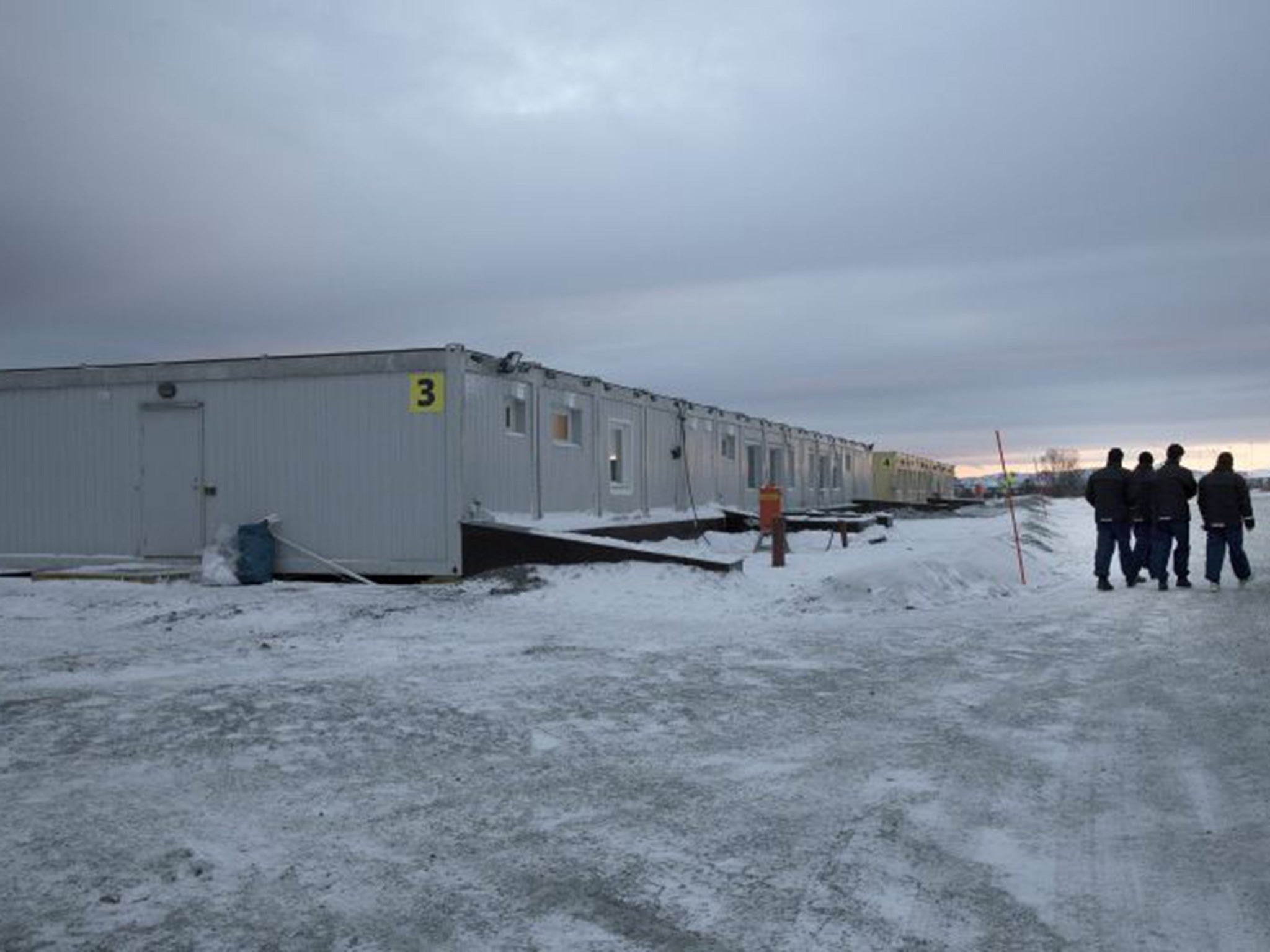Refugee crisis: Arctic frontier between Russia and Norway one of the fastest growing-routes despite impending permanent darkness
Polar night, or total darkness, is set to begin in late November and continue to late January

Your support helps us to tell the story
From reproductive rights to climate change to Big Tech, The Independent is on the ground when the story is developing. Whether it's investigating the financials of Elon Musk's pro-Trump PAC or producing our latest documentary, 'The A Word', which shines a light on the American women fighting for reproductive rights, we know how important it is to parse out the facts from the messaging.
At such a critical moment in US history, we need reporters on the ground. Your donation allows us to keep sending journalists to speak to both sides of the story.
The Independent is trusted by Americans across the entire political spectrum. And unlike many other quality news outlets, we choose not to lock Americans out of our reporting and analysis with paywalls. We believe quality journalism should be available to everyone, paid for by those who can afford it.
Your support makes all the difference.As winter sets in, Norway's Arctic frontier with Russia is becoming one of the fastest-growing routes for asylum seekers to enter Western Europe, despite being inhospitable, cold and -- soon -- permanently dark.
The imminent arrival of the polar night -- when the sun does not rise from roughly late November to late January -- has not dissuaded an increasing number of Syrians, Afghans and others from taking this remote and icy route in search of security.
Over 4,000 people have crossed the border since August, up from just 10 in 2014, according to Norwegian authorities, which have been taken surprise by the speed of the change and now fear that winter will make the passage a deadly one.
"This road is safer. You don't have to cross the sea," said Akram Ali, 23, a technical engineering student who three days ago was in his hometown of Tartus, Syria, and was now trying to warm up at an arrival centre opened on Wednesday.
The number of people taking the Arctic route is tiny compared to the three-quarters of a million who have arrived on Europe's southern shores after crossing the Mediterranean this year, a perilous journey that has cost at least 3,400 lives.
"It is so cold here," Ali told Reuters, his head buried in a woolly grey scarf wrapped around a thin brown jacket. Temperatures at the border dipped to minus 10 degrees Celsius on Wednesday, with a biting wind blowing.

Ali left Syria to avoid the army draft and paid $2,500 all-inclusive for the trip to the border, which included flying to the Russian Arctic port of Murmansk via Moscow and Beirut. Like others reaching Norway, he cycled the final stretch, as Russian authorities do not allow travellers to proceed on foot.
The centre where Ali will spend his first 48 hours in Norway will provide shelter for around 600 people in prefabricated barracks on the site of a former military camp bordering the airport of Kirkenes, some 15 km (9 miles) from the border.
New arrivals are given fleece jumpers, waterproof jackets and other clothes appropriate for the Arctic climate, with most sleeping in bunk beds.
Until now asylum seekers have been housed in Kirkenes' sports hall but the rising number of arrivals made it impossible to continue. The new reception centre took four weeks to open.
European countries are deeply split over how to respond to the sudden and massive influx of people.
Norway's minority government, a coalition of the centre-right Conservatives and the anti-immigration Progress Party, said on Tuesday that it would seek to pass emergency legislation next week to limit the numbers arriving. The proposed law would enable authorities to turn away within 48 hours any asylum seekers who have had residency visas in Russia.
It is advertising the new restrictions on social media, in the hope it will act as a deterrent. But that may prove futile.
"In Norway, the government gives you a chance. Maybe here I can have a future," said Bikram Shrestha, a 32-year-old Nepalese car mechanic who lived for five months in Moscow. "In Russia they don't speak English and it is hard to get a job."
He cycled some 30 km to the border on a children's bike he bought for $400. Like his neighbour in the centre's waiting room, he had to contend with slippery roads.
"I fell on the ice maybe 10-12 times," said 32-year-old Waqas Waheed from Pakistan, a textile factory worker who lived for eight months in Moscow and paid $200 for a child's bike.
With polar nights just days away, authorities here are concerned the Arctic route is becoming more dangerous.
"People could die: it is very cold ... There is a danger it can happen," said Rune Rafaelsen, the mayor of the local municipality of Soer-Varanger.
Last week, he visited the mayor of Nikel, the nearest Russian town on the other side of the border, to discuss how to deal with the asylum crisis.
"What I saw along the road was very worrying. Soon it can be minus 20-30 degrees. I don't want to see people out walking or on bikes, with children, at these temperatures," Rafaelsen told Reuters.
"(In Russia) I saw people crying, young children, babies, it was a sight I did not like.
"I have crossed the border several hundred times and for me this was very emotional. I never thought this should happen at this border so far in the high north. This was a sad moment for me."
Reuters
Join our commenting forum
Join thought-provoking conversations, follow other Independent readers and see their replies
Comments